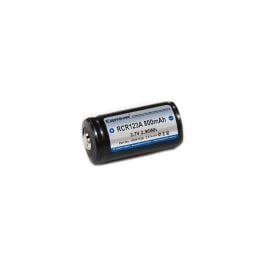aznsx
Flashlight Enthusiast
Roger that. From everything I've 'heard', and In my personal experience, Li-ion cells such as are most commonly used in flashlights, etc., (3.6-4.2V chemistries such as 'ICR/IMR/INR', etc), exhibit an amazingly low / slow "self-discharge" rate over time if they're in reasonable condition. I just checked a couple of such cells which are in good condition, but have been sitting stored fully charged but unused for several years, and they still measure over 4 V (no-load / open-circuit). I consider that a very low (and likely typical) self-discharge rate for a cell in good condition in the context of what you're referring to. If I saw significant self-discharge measured in weeks or months (let alone days), I would retire those cells. Keep in mind that "self" means 'alone / by itself'.In the light unused, but the light is a new version RRT-01 with the tailcap switch, so there should be zero parasitic drain when off. Happened over only about a week as well.
I am not familiar with your flashlight. In my experience in diagnostics (which is what I do for a living), the word "should" is not conclusive / definitive, and is only used when a more definitive, conclusive word does not apply and cannot be used or is otherwise unavailable. The only definitive, conclusive test that I'm aware of to test what you're experiencing is to fully charge the cell (4.2V), leave it sitting on a shelf by itself for (in your case) a week (the time frame you're referring to), and then check the voltage. If it's under 4 V at that time, I would retire the cell. If it's still at least in the 4.0-4.1V+ range, I would assume it is likely OK. It doesn't appear you've done that simple test, therefore that is what I would suggest you do to progress with your diagnostics. That is the only way to eliminate the light as a possible cause of high cell discharge in the short timeframe you're talking about (essentially eliminating it from the equation / test completely). Anything else is essentially non-conclusive. One should only 'assume' in the absence of available facts. You have facts available in a week or less, which is less than half the time since this thread was started. If you have only 1 cell, and have no others to use while the suspect cell sits for a week, I'd recommend you consider picking up 1 or 2 more on general principle. Good 16340 cells cost <$10, you should probably have more than 1 anyway, and if you have more than 1 you'll have a replacement for the 'bad' cell if it indeed proves to be defective. That said, I believe you said you have (at least) 2 other cells that you "trust", so you likely don't need to buy any more to do the proper / required test.
If the cell proves to be defective (the root cause of your problem), you've already gotten some replacement suggestions. If the cell proves OK after that test, that only leaves the light as the root cause, and as that's a fairly popular light with some around here, I'm sure you'll have some assistance available in trying to diagnose / troubleshoot it.




